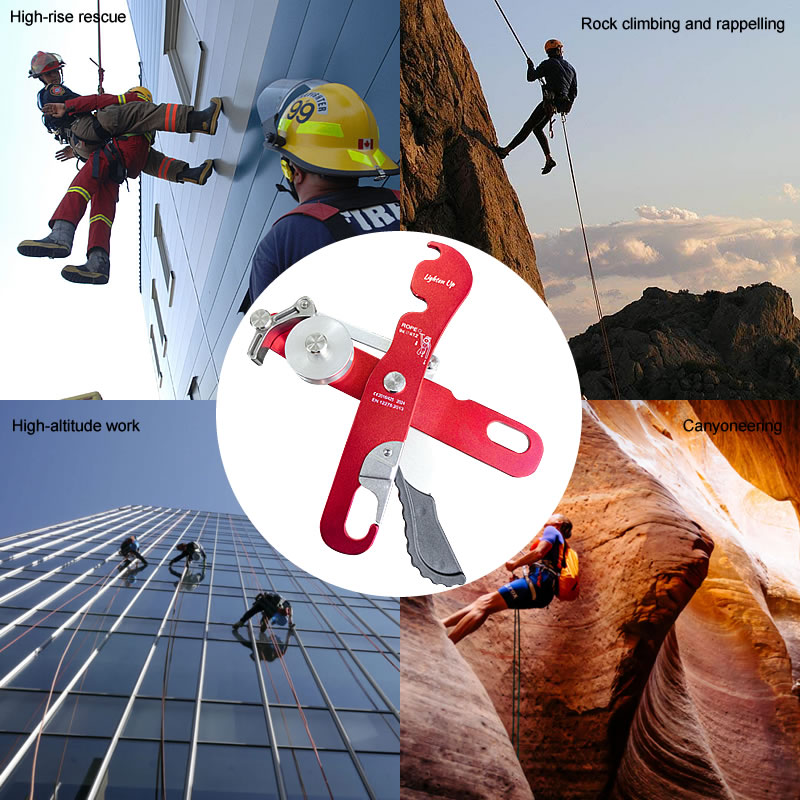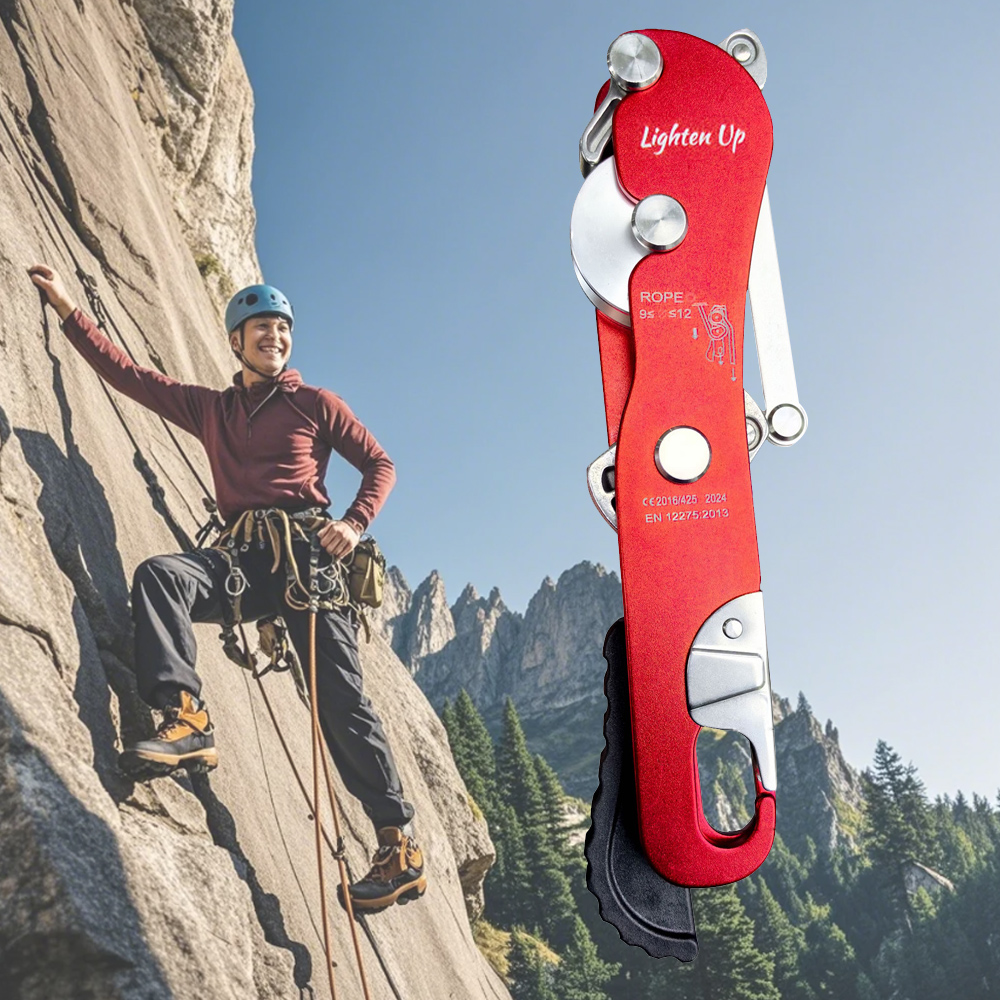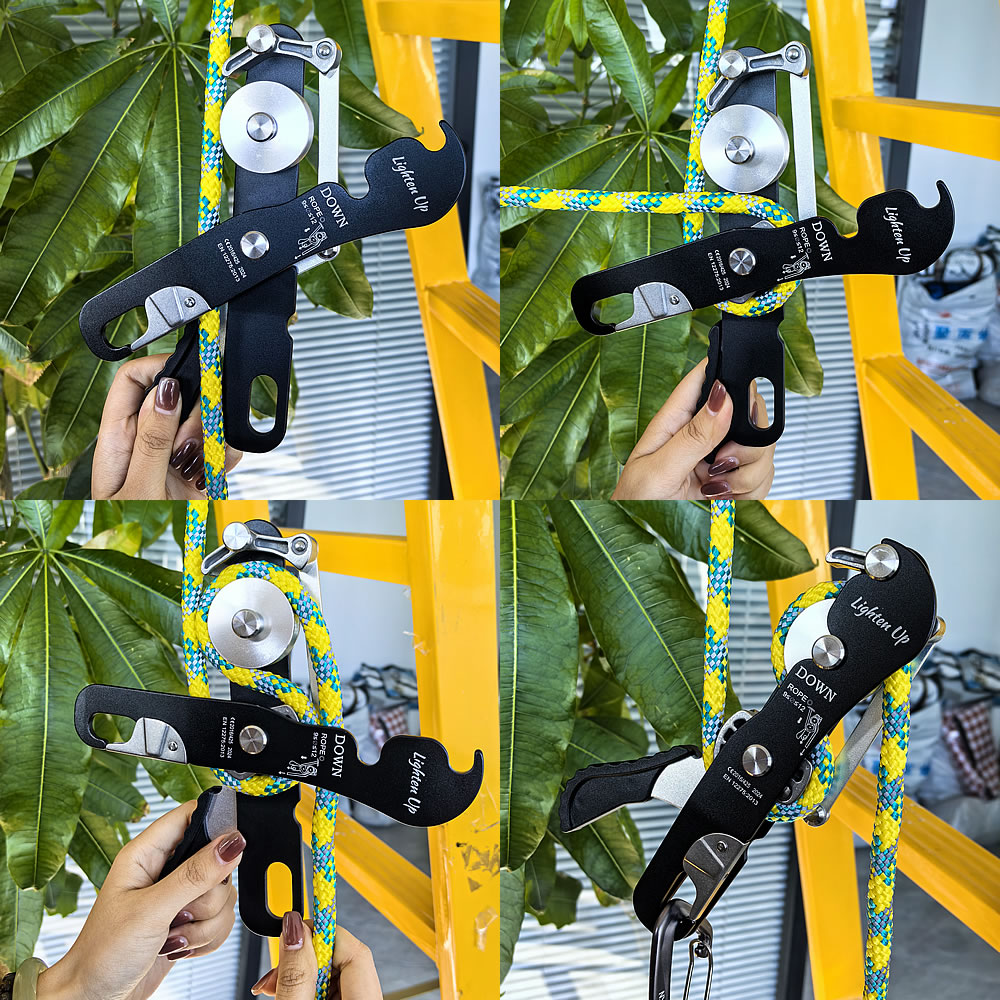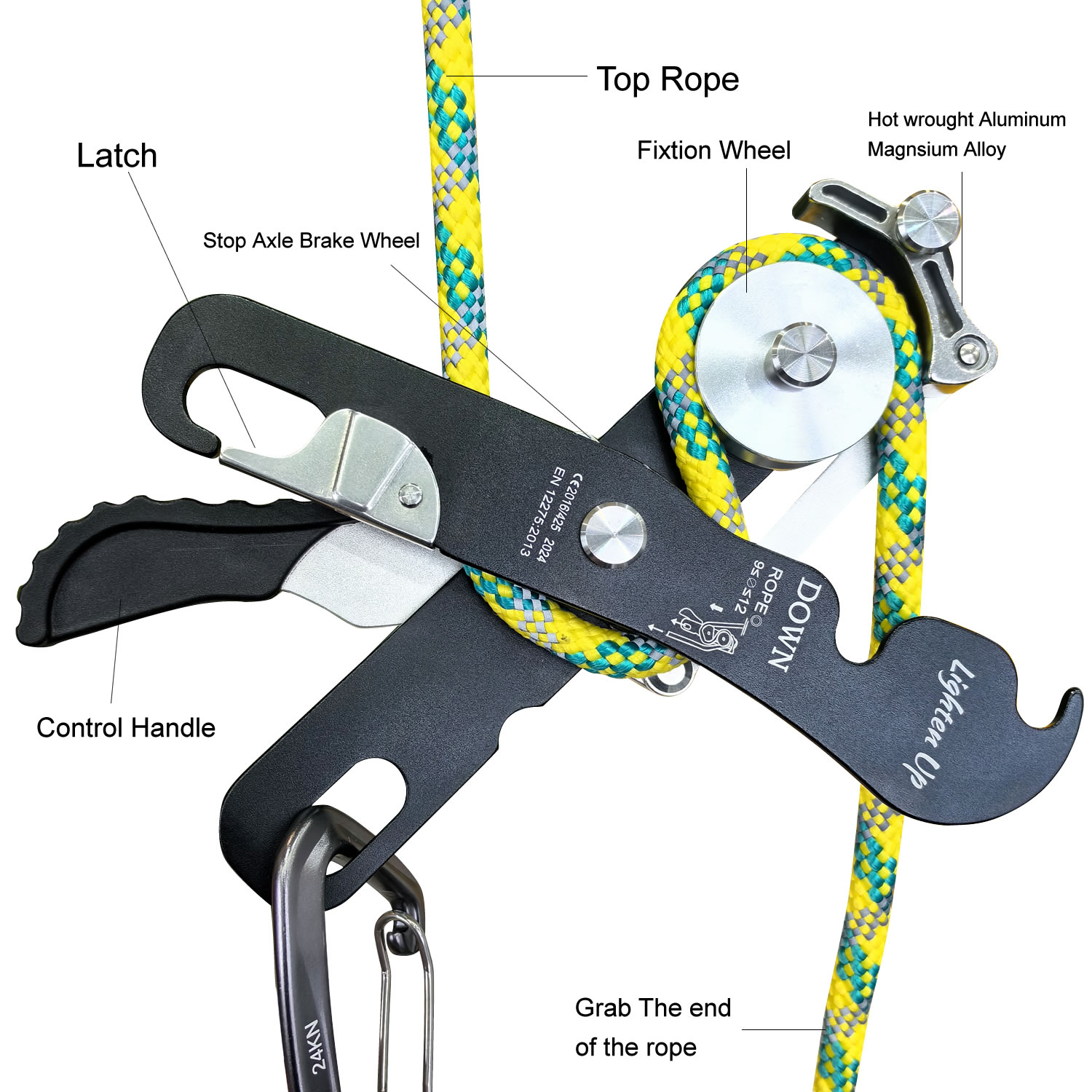Self-Braking Descender: The Smart Choice for Safe and Efficient Climbing

In rock climbing and mountaineering activities, rappelling is a crucial step, and the Self Braking Descender is the core equipment to ensure the safety and efficiency of this process. It is crucial for both professional climbers and outdoor enthusiasts to choose a high-performance self-locking descent device. This article will provide a detailed analysis of the relationship, usage, advantages, maintenance methods, and comparison with other materials between Self Braking Descender and outdoor environments.
The Relationship between Self Braking Descender and Outdoor Activities
Security guarantee:
In rock climbing, mountaineering, or rescue missions, self-locking descent devices are key tools to ensure safe descent.
It uses an automatic locking function to prevent accidental slippage and ensure that users descend at a safe and controllable speed.
Efficient operation:
The self-locking descent device is well-designed and can quickly connect and release ropes, improving the efficiency of outdoor activities.
Especially suitable for scenarios involving multiple climbs or frequent descents.
Multifunctionality:
In addition to descent, many self-locking descent devices can also be used for rope fixation, protection point setting, etc., making them multifunctional tools for outdoor activities


The main purpose of Self Braking Descender
Climbing descent:
Used for safe descent from high places, it is an indispensable tool in rock climbing activities.
Mountaineering application:
In multi-stage climbing or complex terrain, self-locking descent devices help climbers descend quickly and safely.
Rescue mission:
In rescue operations, self-locking descent devices are used to quickly lower or lift trapped individuals.
Rope management:
Used for fixing ropes, setting protection points, or adjusting rope length.
Advantages of Self Braking Descender
Automatic locking function:
The self-locking descent device uses an automatic locking function to prevent accidental slippage, ensuring that users can descend at a safe and controllable speed.
This feature is particularly suitable for beginners or use in high-risk environments.
High strength and lightweight:
Adopting hot forged aluminum alloy and stainless steel, the self-locking descent device combines high strength and lightweight characteristics.
Hot forged aluminum alloy provides excellent strength to weight ratio, while stainless steel enhances durability and corrosion resistance.
Easy to operate:
The design conforms to ergonomics, with simple and intuitive operation, suitable for beginners and professional users.
The function of quickly connecting and releasing ropes has improved efficiency.
Durability:
Hot forged aluminum alloy and stainless steel materials enable self-locking reducers to withstand wear and impact under extreme conditions.


Maintenance and usage methods of Self Braking Descender
Usage
Correct installation:
Thread the rope correctly through the self-locking descent device according to the instructions to ensure even distribution of friction.
Test Friction Force:
Before the official descent, test the friction of the self-locking descent device to ensure that it can provide sufficient control force.
Maintain a stable posture:
Maintain body stability during descent and avoid sudden shaking or rapid descent.
Use self-locking function:
When a pause is required, use the automatic locking function of the self-locking descent device to secure the rope.
curing method
Regular cleaning:
Wipe the self-locking descent device with a damp cloth to remove dust and dirt, and avoid using corrosive cleaning agents.
Check for wear and tear:
Regularly inspect the surface and edges of the self-locking descent device for wear or cracks, and replace damaged parts in a timely manner.
Lubricate moving parts:
Properly lubricate moving parts (such as rotating shafts) to ensure their smooth operation.
Storage environment:
Store in a dry and cool place, avoiding prolonged exposure to damp or high temperature environments.



Comparison between Self Braking Descender and Other Materials
Hot forged aluminum alloy vs. ordinary aluminum alloy:
Hot forged aluminum alloy: higher strength, lighter weight, suitable for high-intensity activities.
Ordinary aluminum alloy: low strength, heavy weight, suitable for light use.
Stainless steel vs. ordinary steel:
Stainless steel: Strong corrosion resistance, suitable for humid or variable environments.
Ordinary steel: prone to rusting and requires more maintenance.
Hot forged aluminum alloy vs. plastic:
Hot forged aluminum alloy: high strength, good durability, suitable for professional rock climbing.
Plastic: lightweight but lacks strength, prone to wear and breakage.
conclusion
Self Braking Descender, with its automatic locking function, high strength, lightweight design, and safe and controllable features, has become an indispensable tool in climbing, mountaineering, and rescue activities. Both the advantages of hot forged aluminum alloy and stainless steel materials, as well as their versatility and ease of use, make them stand out in outdoor equipment. Through proper use and maintenance, Self Braking Descender will become a reliable partner for your outdoor adventures. Choose it to make your every descent safer and more efficient!







